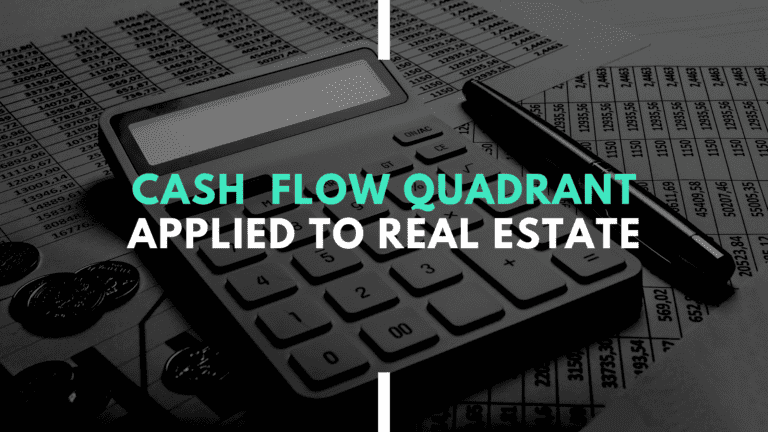Passive Real Estate Investing
The Ultimate Guide to Passive Real Estate Investing: Strategies, Benefits, and How to Get Started
- The Ultimate Guide to Passive Real Estate Investing: Strategies, Benefits, and How to Get Started
- Definition of passive real estate investing
- Importance of diversifying an investment portfolio
- Long-term wealth creation through passive real estate investing
- Benefits of Passive Real Estate Investing
- Exploring Passive Real Estate Investment Strategies
- Tax Advantages of Passive Real Estate Investing
- Building a Passive Real Estate Investment Portfolio
- Tips for Successful Passive Real Estate Investing
- In Summary
- Common Questions About Passive Investing
Definition of passive real estate investing
Are you an investor looking to grow your wealth with real estate but don’t have the time or intuition for active investing?
If so, passive real estate investing may be for you! Passive real estate investing is investing in commercial, residential, and other real estate without managing it or taking on ownership responsibilities. Furthermore, passive investors put their money into professionally managed companies that do all the hard work for them. In this blog post, we’ll discuss the definition of passive real estate investing and why it can be beneficial compared to active investment strategies. Keep reading to learn more about how you can get involved in this popular form of investing!
Importance of diversifying an investment portfolio
Investing in real estate is a great way to diversify your portfolio and create passive income. However, it’s essential to understand the risks associated with investing in any single asset. While every investment comes with its own level of risk, avoiding too much concentration on one area can help minimize that risk and protect your overall finances. Diversifying a real estate portfolio can provide investors numerous advantages when maximizing returns, balancing out fluctuations in the market, or generating consistent income streams. This blog post will discuss diversifying your real estate investments and how you can do so effectively.
Long-term wealth creation through passive real estate investing
The concept of passive real estate investing has been around for many years, and it’s a powerful strategy for creating long-term wealth. By utilizing passive income strategies such as renting out properties or formulating an intelligent investment plan — investors can help build sustainable and secure financial futures while supplementing their current income by generating additional revenue streams.
But beyond the practical usage in this field, passive real estate investing also offers other essential elements; helping individuals gain more control over their finances, acquire permanent assets that exceed those offered by an employer’s retirement plan, and offer tax advantages not accessible through conventional investment methods.
Benefits of Passive Real Estate Investing
Passive real estate investing offers a wealth of benefits for savvy investors. Here, we will discuss five critical advantages of passive real estate investing and how it can help you to unlock your wealth-building potential.
Regular Cash Flow
One of the primary benefits of passive real estate investment is the regular cash flow it can generate. Investing in rental property can provide you with a steady stream of income that you can use to pay the bills or invest elsewhere. Additionally, if you purchase multiple properties, you can diversify your portfolio and increase your total monthly income.
Tax Advantages
Investors often overlook the tax advantages associated with investing in rental property. When owning real estate, investors get to deduct expenses such as loan interest payments, repairs, and depreciation on their taxes, which can significantly reduce their taxable income and overall tax burden.
Portfolio Diversification
Diversifying your portfolio is an integral part of any investor’s strategy, and passive real estate investment provides an excellent opportunity for doing so. Investing in rental properties can diversify your investments away from stocks and bonds into a more tangible asset class, lowering risk while providing steady returns over time.
Inflation Hedge
Inflation is always a risk in any type of investment. Still, passive real estate investment provides an effective hedge against inflationary pressures because rents tend to rise as inflation increases while fixed loan rates remain constant over time. This makes rental investments attractive even when inflation rises, as it reduces the impact on net returns over time.
Long-Term Appreciation Potential
Purchasing rental property also offers long-term appreciation potential, which investors should take advantage of when possible. As rents increase due to market forces or renovations made to the property, its value will also increase, allowing for substantial returns if sold at a profit at some point down the line.
Exploring Passive Real Estate Investment Strategies
Passive real estate investing offers numerous benefits and opportunities for investors to diversify their portfolios and generate consistent returns. There are several strategies to choose from, each with its own unique advantages and drawbacks. This article will discuss four popular passive real estate investment strategies: Real Estate Investment Trusts (REITs), real estate crowdfunding platforms, turnkey rental properties, and private real estate funds.
Real Estate Investment Trusts (REITs)
A REIT or real estate investment trust, is an entity that pools money from individual investors and invests it into a portfolio of commercial or residential properties. REITs have been around since the 1960s and have become increasingly popular due to their high liquidity, diversity, tax advantages, and low cost of entry.
They also offer investors access to large commercial projects that would otherwise be out of reach for most individual investors. The main drawback is that returns are generally lower than those achieved through other investments due to their pool size and diversification strategy.
Real Estate Crowdfunding Platforms
Real estate crowdfunding platforms allow investors to invest in pre-vetted deals with a minimal financial commitment. These platforms provide access to various projects at various stages of development while allowing investors to spread their risk across multiple deals.
However, they typically do not offer the same level of returns as traditional investments due to their short investment horizons and fees charged by the platform operator. Additionally, there may be legal restrictions on who can participate in specific deals depending on where you live or work.
Are you interested in investing in real estate but don’t have the means? Consider Fundrise, an online platform for real estate investments that makes investing easy and affordable. With a minimum investment requirement of just $500, Fundrise allows investors to get started with real estate without breaking the bank. Let’s take a closer look at what Fundrise is, how it works, and its advantages and drawbacks for potential investors.
Fundrise is an online platform for real estate investments that allows users to invest in properties nationwide for as little as $500. The company offers several investment options ranging from eREITs—diversified collections of commercial real estate assets—to private placements, allowing investors to purchase a stake in individual properties. Fundrise also provides detailed information on each property, such as its location, type of asset class, projected returns, and more. This helps investors decide which properties they want to invest in.
Turnkey Rental Properties
Turnkey rental properties are fully renovated homes or buildings purchased by an investor for use as rental income-producing assets. The investor then hires a property manager who takes care of all upkeep-related tasks such as finding tenants, collecting rent payments, handling repairs/maintenance requests, etc., thus freeing up the investor from involvement with day-to-day operations once they acquire the property itself.
This type of investment offers short-term cash flow via monthly rent payments and long-term appreciation if managed correctly over time. However, it requires significant upfront capital, which many investors may not have due to current economic conditions resulting from the COVID-19 pandemic’s effects on global markets.
Private Real Estate Funds
Private funds are created by one or more firms who pool together capital from accredited investors for investment into specific projects or portfolios; these funds typically focus on larger projects such as office buildings or multi-family complexes but can also consist of smaller residential developments depending on their scope/structure.
Investors must meet specific criteria to make an initial contribution towards these funds, allowing them access to higher value opportunities than less sophisticated alternative routes such as buying single-family homes outright. Potential returns vary greatly depending on fund structure, asset class, geographic region, etc., but could yield higher returns when compared with other forms if appropriately managed over time.
Tax Advantages of Passive Real Estate Investing
Regarding passive real estate investing, several tax advantages can help you reach your financial goals. For example, one of the most essential benefits of passive real estate investing is the ability to deduct certain expenses from your taxes. Some of these deductions include mortgage interest payments, property management fees, travel expenses related to rental properties, and any repairs or improvements made on rental properties.
Here is a list of some common tax advantages:
- Deductible expenses:
- Mortgage interest payments
- Property management fees
- Travel expenses related to rental properties
- Repairs or improvements on rental properties
- Depreciation deductions:
- Spread out the cost of a property over several years for tax purposes.
- Reduce taxable income by writing off depreciation each year
- Benefit even if the rental property isn’t generating positive cash flow yet.
- Potential capital gains savings:
- Subject to capital gains taxes when selling an investment property for a profit
- Depending on the situation, holding onto an investment property for more than a year may significantly reduce capital gains taxes.
Another benefit of passive real estate investing is taking advantage of depreciation deductions. Depreciation allows you to spread out the cost of a property over several years for tax purposes. The main benefit here is that it allows you to reduce your taxable income by writing off the depreciation on your rental property each year. This means that you can still reduce your yearly taxes even if your rental property isn’t generating positive cash flow.
Passive real estate investments also offer potential capital gains and savings when selling your investment property. When you sell an investment property for more than what you purchased initially, you will be subject to paying capital gains taxes on the difference between what it was purchased for and what it was sold for. However, if you hold onto an investment property for more than a year before selling it, those capital gains taxes may be reduced significantly depending on your situation.
Building a Passive Real Estate Investment Portfolio
Are you looking for a way to build wealth and generate income without sacrificing the time? If so, passive real estate investing may be the strategy for you. Passive real estate investments allow investors to diversify their portfolios with low-risk investments that yield high returns. With this approach, investors can benefit from the rental income while still having control over their investment decisions. This article will discuss the basics of passive real estate investing and provide an overview of how it works and tips on building a successful portfolio.
Setting financial goals
Setting financial goals is essential in creating a successful passive real estate investment portfolio. By setting clear, achievable goals, investors can ensure they invest in suitable properties and make intelligent decisions to help them reach their objectives.
Example charge of financial goals planning, not necessarily accurate:
Goal Type | Strategy Type | Time Horizon | Target Return | Risk Tolerance | Example |
|---|---|---|---|---|---|
Short-term | Fix and flip | 6-12 months | 15-30% | High | Purchase a distressed property, renovate, and sell for a profit within 6 to 12 months. |
Medium-term | Buy and hold rental properties | 5-10 years | 8-12% | Moderate | Acquire single-family or multi-family homes, rent them out, and build equity over 5-10 years. |
Long-term | Real estate syndication | 10-20 years | 10-15% | Moderate | Invest in a commercial real estate project as a limited partner, with a 10-20 year horizon. |
Retirement | Real estate investment trust | 20+ years | 4-7% | Low | Invest in a diversified portfolio of income-producing properties through a REIT for 20+ years. |
Diversification | Real estate crowdfunding | 3-10 years | 8-15% | Moderate | Pool funds with other investors to finance a variety of real estate projects for 3-10 years. |
Financial goals should include short-term and long-term plans for building wealth and generating income from real estate investments. It is also meant to set expectations for returns on investments and risk tolerance levels so that investors know what type of return they should expect when investing in different properties. This is also a very helpful exercise if you are still deciding what type of real estate investing is right for you.
With proper financial planning, passive real estate investments can provide high returns with minimal effort or time commitment required by the investor.
Evaluating risk tolerance
Evaluating risk tolerance is a crucial part of passive real estate investing. It requires investors to assess their financial goals and expectations for returns on investments to determine the right type of property to provide them with the desired returns.
Risk tolerance should be evaluated based on current financial status, investment objectives, and market conditions. Before making any decisions, investors should also consider the potential risks of different real estate investments. By evaluating risk tolerance and understanding the potential rewards and risks associated with each property, investors can make informed decisions to help them reach their financial goals while minimizing losses from risky investments.
Determining investment criteria
When it comes to passive real estate investing, determining the right investment criteria is essential for success. When evaluating a potential investment, investors should consider factors such as location, size of the property, rental income potential, and other associated costs. Additionally, investors must assess their own risk tolerance level and determine whether they are comfortable with taking on high or low levels of risk to achieve their desired returns.
By carefully considering these factors before making investments, investors can ensure that their decision is well-informed and aligns with both short-term and long-term financial goals. Ultimately, this will help maximize the investor’s return on investment while minimizing any associated risks.
Diversification strategies
Diversification is an integral part of any successful real estate investment strategy. By spreading investments across different types of properties, investors can reduce their risk and maximize potential returns. Diversifying a portfolio with passive income investments such as rental properties allows for greater market flexibility and more opportunities to generate income from multiple sources.
Additionally, diversification strategies help investors manage risks associated with specific markets or locations that could be affected by changing economic conditions. With careful planning and consideration of all available options, investors can use diversification strategies to create a balanced portfolio that will provide them with long-term financial security while allowing growth potential.
Monitoring and adjusting your portfolio
Monitoring and adjusting your portfolio is essential to creating a successful passive real estate investment strategy. As market conditions change, investors must be prepared to adjust their portfolios accordingly to maximize returns while minimizing risks. Investors must stay current on market trends and developments to identify opportunities.
Additionally, investors should regularly review their current investments and evaluate whether or not they are still meeting their goals. If adjustments need to be made, it is best to do so quickly to take advantage of any potential gains or minimize losses due to changing market conditions. By effectively monitoring and adjusting the portfolio, passive real estate investing can help generate long-term wealth with minimal effort required from the investor.
Tips for Successful Passive Real Estate Investing
Research and due diligence
Research and due diligence are essential for passive real estate investing. You must learn to be extremely good at real estate market analysis.
Before making any investments, investors should thoroughly research the market and assess potential risks and rewards associated with different properties. Additionally, investors should conduct due diligence by carefully reviewing all available information on a property before making any decisions. This includes researching local laws and regulations, assessing rental income potential, understanding local housing trends, and researching property values over time to help identify investment opportunities.
By taking the necessary steps to ensure that all information is correctly analyzed before any investments are made, investors can protect themselves from losses associated with risky investments while maximizing their return on investment.
Networking and building relationships
Networking and building relationships are also crucial for passive real estate investing success. Build relationships with reliable professionals within the industry, such as:

- Real estate agents/brokers: They can help you find potential properties, provide market insights, and assist with the buying and selling process.
- Mortgage brokers/lenders: They can assist you in finding the best financing options for your investment properties.
- Real estate attorneys can guide you through legal matters related to property transactions, contracts, and disputes.
- Property managers: They can handle the day-to-day operations of your rental properties, ensuring a smooth and efficient rental process.
- Real estate appraisers can provide accurate property valuations, essential for determining a property’s worth and securing financing.
- Home inspectors: They can assess the condition of a property and identify any potential issues before you invest.
- Contractors and tradespeople: They can help you with property renovations, repairs, and maintenance.
- Real estate developers can provide insights into new developments and opportunities within your target market.
- Real estate investment clubs and associations: Networking with like-minded investors can help you learn from their experiences and gain access to potential investment opportunities.
- Real estate mentors and coaches: They can offer guidance and advice on strategies, market trends, and best practices to grow your real estate investment portfolio.
- Accountants and tax professionals: They can help you manage your finances, optimize your tax strategy, and ensure compliance with tax laws related to real estate investing.
- Insurance agents: They can assist you in obtaining the right insurance coverage for your investment properties, protecting your assets from potential risks.
- Title agents and escrow officers: They can help you navigate the title and escrow process during property transactions, ensuring a smooth closing process.
In Summary
Overall, passive real estate investing can be a great way to generate long-term wealth with minimal effort. However, it is crucial for investors to properly research and analyze the market before making any investments. Building relationships with reliable professionals within the industry will help ensure that all information is properly analyzed and that potential risks are minimized. With proper research, due diligence, networking, and relationship-building strategies in place, passive real estate investing can provide an excellent opportunity to grow your portfolio over time while minimizing risk.








